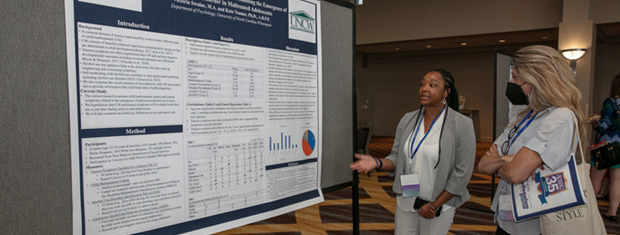




The APSAC Advisor is a peer reviewed quarterly news journal for professionals in the field of child abuse and neglect.
The APSAC Advisor provides succinct, data-based, practice-oriented articles that keep interdisciplinary professionals
informed of the latest developments in policy and practice the field of child maltreatment. It is designed to highlight
best practices in the field and publish original articles and current information about child maltreatment for professionals
from a variety of backgrounds including medicine, law, law enforcement, social work, child protective services, psychology,
public health and prevention in the U.S.
 If you wish to learn more about submitting an article to the Advisor, please click here.
If you wish to learn more about submitting an article to the Advisor, please click here.
This library contains Advisor issues dating back to the first issue in 1988. The most recent issue appears at the top.
Scroll down to select past issues by year and issue number. Once a publication appears in the box, you
can use the Enlarge button to open the document in a new window or tab (depending on how your browser is set up).
This will allow you to view the document with larger print.
To print a document, first use the Enlarge button to open the document in a new window or tab. Then use your browser's Print command.
To return here from a new tab, close the tab. To return from a new window, click your browser's Back button.
In the listing below, click on a year and issue number to see the articles in that publication.
2011 Number 1 and 2
The Questionable Legitimacy of Pediatric Bipolar Disorder
Until relatively recently, a diagnosis of bipolar disorder in children under the age of 12 was extremely rare. Before the 1990s, it was generally accepted that bipolar disorder was typically first expressed in the late teens or early 20s. In the past 20 years, there has been a 40-fold increase in the number of children and adolescents diagnosed with bipolar disorder.
Working With Undocumented Latino Youth Who Have Been Sexually Abused
While childhood sexual abuse exists in all facets of society, there are undoubtedly some particular barriers to child protection services for undocumented children who are at risk or who have been abused.
Ethnic Differences in How Domestic Violence Affects Mothers’ View of Their Infants
Research has consistently found that adolescents, young children, and infants are likely to experience many adverse outcomes in homes where domestic violence occurs (Kitzmann, Gaylord, Holt, & Kenny, 2003; Mahony & Campbell, 1998; McGuigan, 2007), including a higher likelihood of child abuse and neglect (Appel & Holden, 1998; McGuigan & Pratt, 2001). There is an absence of research examining differences in how domestic violence impacts child abuse potential in Hispanic and white non-Hispanic mothers, and little consistency in how Hispanic and white non-Hispanic mothers reportedly differ in their reactions to domestic violence (Aguilar Hass, Dutton, & Orloff, 2000; Edelson, Hokoda, & Ramos-Lira, 2007).
Service Use by Parents in Child Welfare: Current Knowledge and Future Needs
A number of studies have documented that parent mental health and substance abuse problems are associated with child abuse and neglect (e.g., Brown, Cohen, Johnson, & Salzinger, 1998; Chaffin, Kelleher, & Hollenberg, 1996; Dinwiddie & Bucholz, 1993; Kelleher, Chaffin, Hollenberg, & Fischer, 1994). In addition, parents involved with the child welfare system typically have higher rates of poverty, stress, and unemployment than do parents not involved with child welfare (Epstein et al., 1998; Whipple & Webster-Stratton, 1991), and families with more risk factors have higher rates of child maltreatment (Wu et al., 2004). Despite the needs of these parents, there is evidence to suggest they do not always receive appropriate or adequate services and treatments.
Many may think that visiting an eye doctor would be the last place for an abuse victim to go. After reading this article, you may disagree.
An Interview With Bryan Samuels, Commissioner, ACYF
Bryan Samuels is the Commissioner of the Administration on Children, Youth and Families (ACYF) of the U.S. Department of Health and Human Services. He was appointed to this position by President Obama in June, 2009. Among his many responsibilities as Commissioner, Mr. Samuels is responsible for federal activities related to the development, management, and oversight of the country’s public child welfare system.
The purpose of Journal Highlights is to alert readers to current literature on child abuse. Selected articles from journals representing the variety of disciplines reflected in APSAC s membership are presented in the form of an annotated bibliography.
APSAC Advisor 23(1-2): Full Issue